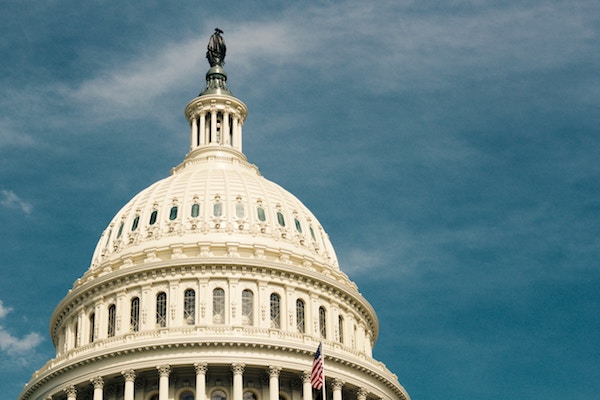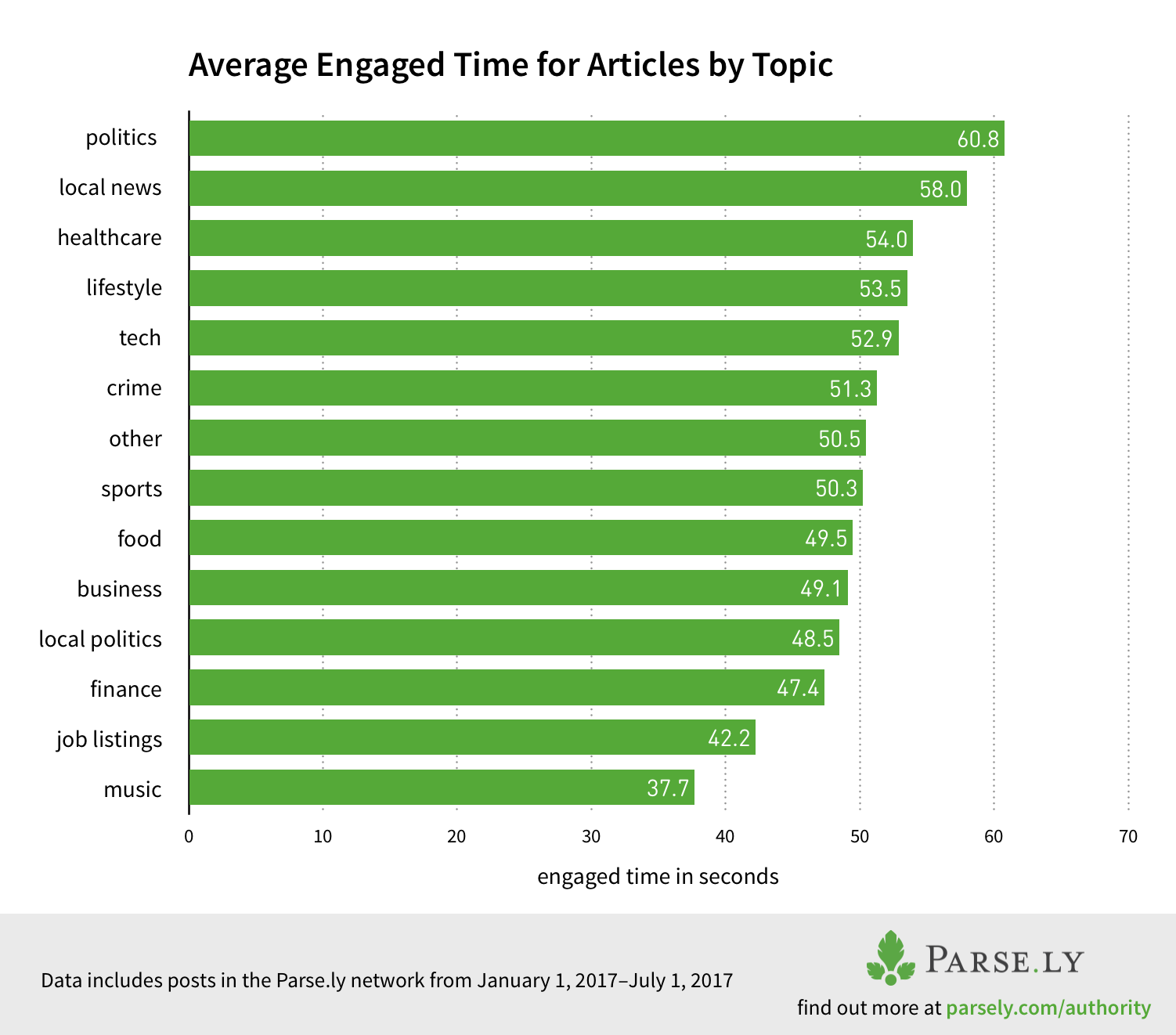The Trump Bump of Readership

The media industry fought back against the word “content” the way most liberals have fought against Trump: with passion. In the case of the former, “content” draws ire because it summarizes a grand, diverse body of work of different styles, topics and formats into one aggregated lump. Unfortunately, data about content tends to fall into the same trap, which makes it hard to understand and use to engage readers.
In untangling the grand web of data that surrounds all content we’ve discovered that Google drives traffic for different topics than Facebook, and that the engagement with different formats might not be what you expect.
Our most recent discovery might not be as surprising. In the first half of 2017, on average, people spent the most time per article with stories about politics. Readers spend the least amount of time with stories about music, finance, and local politics.

If what we spend our time with reflects our interests and values, this chart shows a clear reflection of what’s been on the minds of the public over the last six months. Media companies have reported increased earnings and viewership since President Trump’s election, according to reporting by the Financial Times. Now, we can see that at the individual story level, readers are paying more attention to political news than any other topic, on average, creating a reader “Trump Bump.”
This direct correlation from readers’ attention to the finances of media companies indicates the insights that can be uncovered from contextual data about aggregate content. We’ll be releasing our next Authority Report soon, exploring more of these trends around engagement.